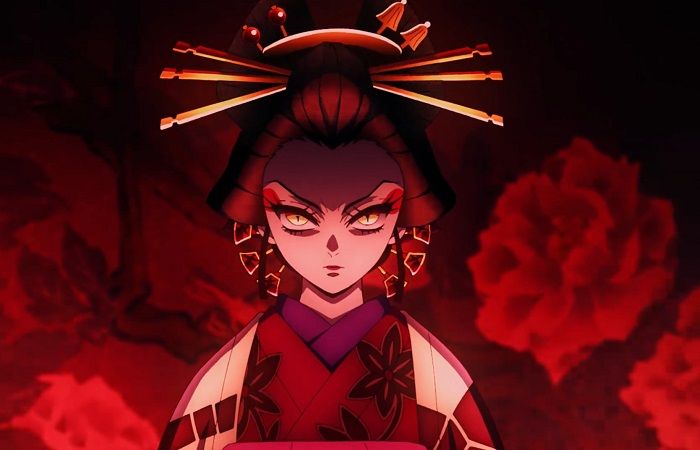Demon Slayer: Kimetsu no Yaiba season 2 has concluded three weeks ago, but discussions about its player’s characters remain hot topics. Particularly, in the final episode of season 2, the demons’ pasts are extensively explored. The demons in Kimetsu no Yaiba have a past as humans, and they often have different names, such as demon Daki. Daki, for instance, has two other names, Ume and Warahibime. Each of her names has a specific meaning.
When she was born, she was named Ume. Although it sounded like a simple and easy-to-remember name, Ume has a dark meaning of suffering and poverty. She had nothing but a lovely face and a caring and protective older brother. Her mother died of syphilis. Then, when she and her older brother, Gyutaro, were turned into demons by the Upper Rank 2 Moon Demon, Doma, Ume then worked as an Oiran (Geisha) in the Entertainment District. She used many names in her disguise, one of which was Warabihime. This name refers to the word ‘warabi,’ which means fern, and ‘hime,’ which means princess.
Just as consuming fern can be hazardous to one’s health, so is Warabihime. On the other hand, Daki always seemed to be aware of her beauty, and thus, she always considered herself a princess. Therefore, if combined, Warabihime means a dangerous princess figure.
Meanwhile, Daki’s name is her demon name, and if we look at the kanji, Daki means to fall into, plummet, descend. This name describes Daki’s life journey from an innocent human figure named Ume to a blood-thirsty demon named Daki. However, the second kanji in the name Daki means princess, depicting Daki’s perception of herself as a princess of the Entertainment District.
Thus, it is evident that names always hold meaning, and this is apparent in the demons of Kimetsu no Yaiba.





